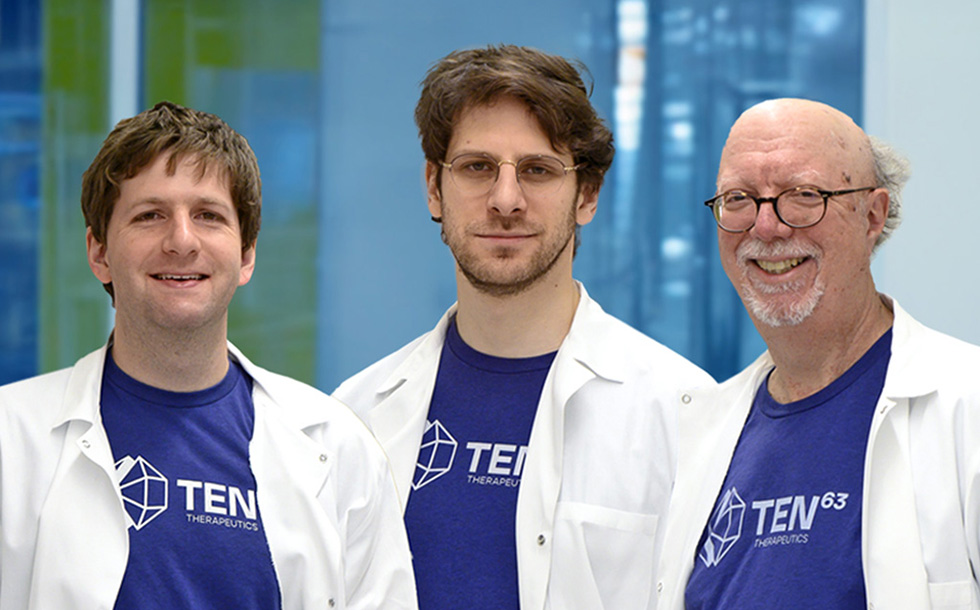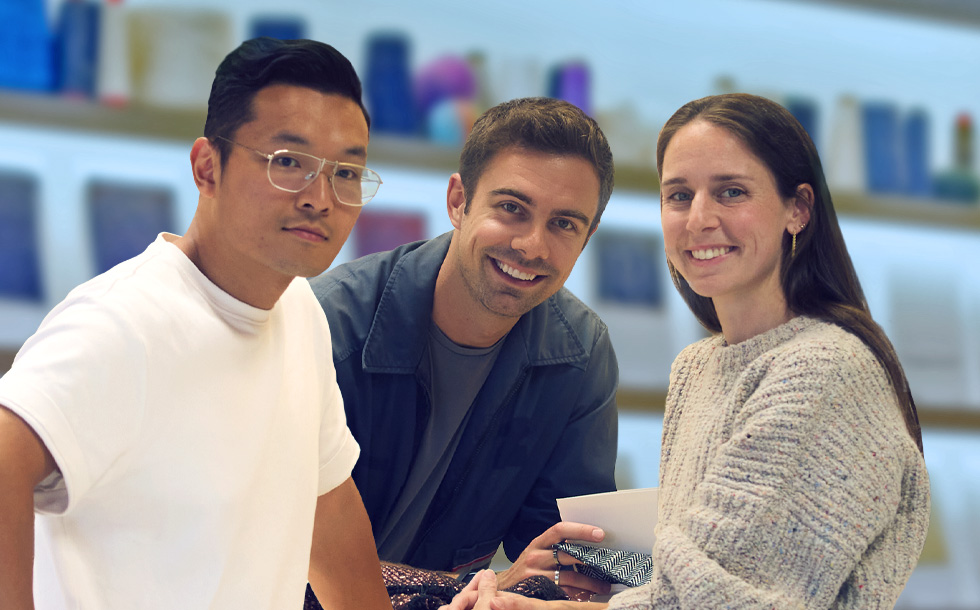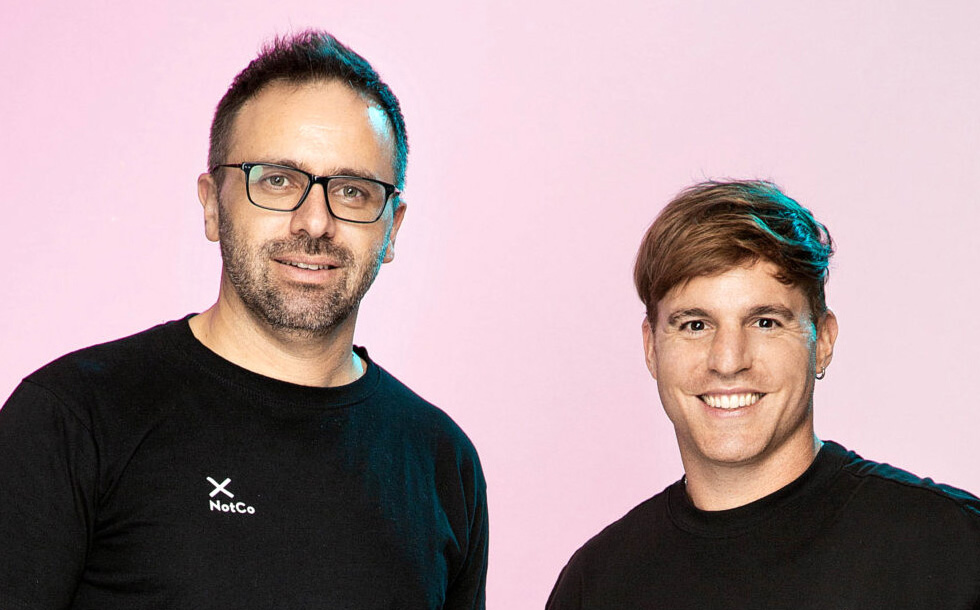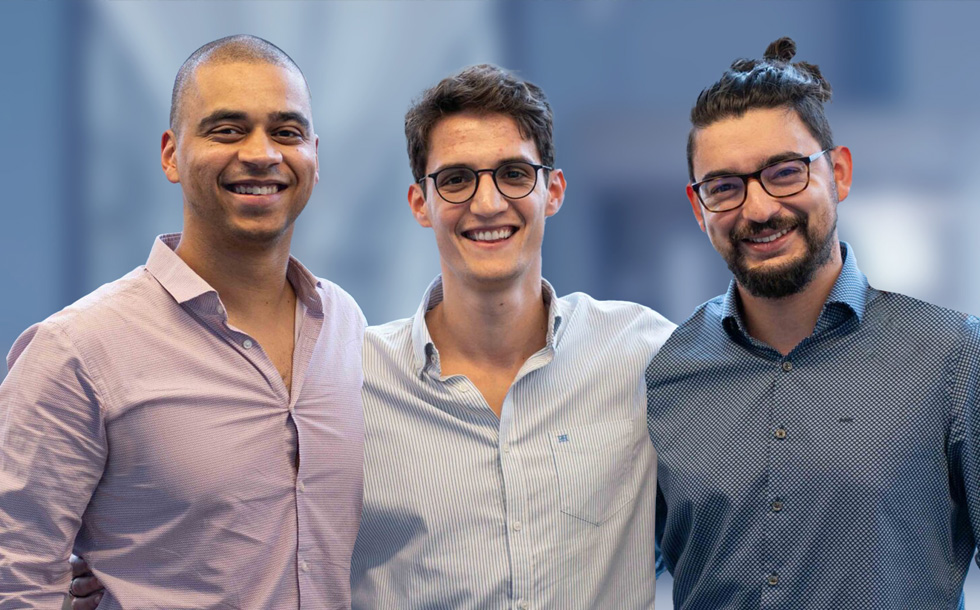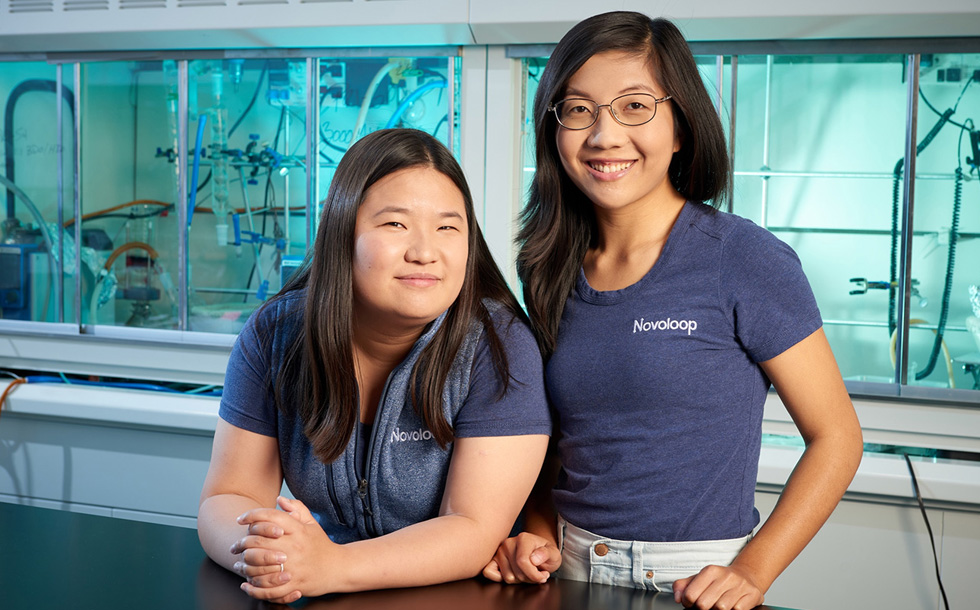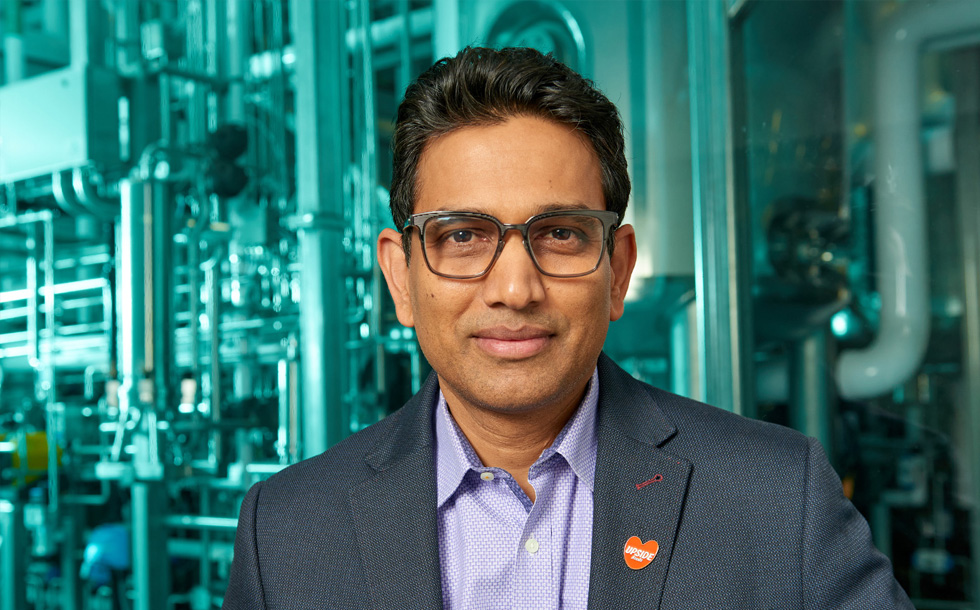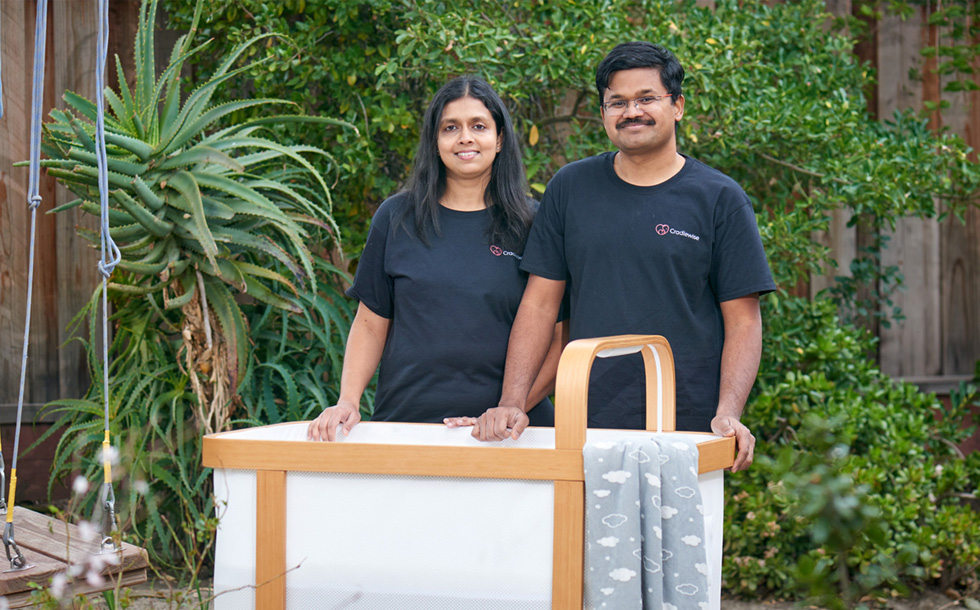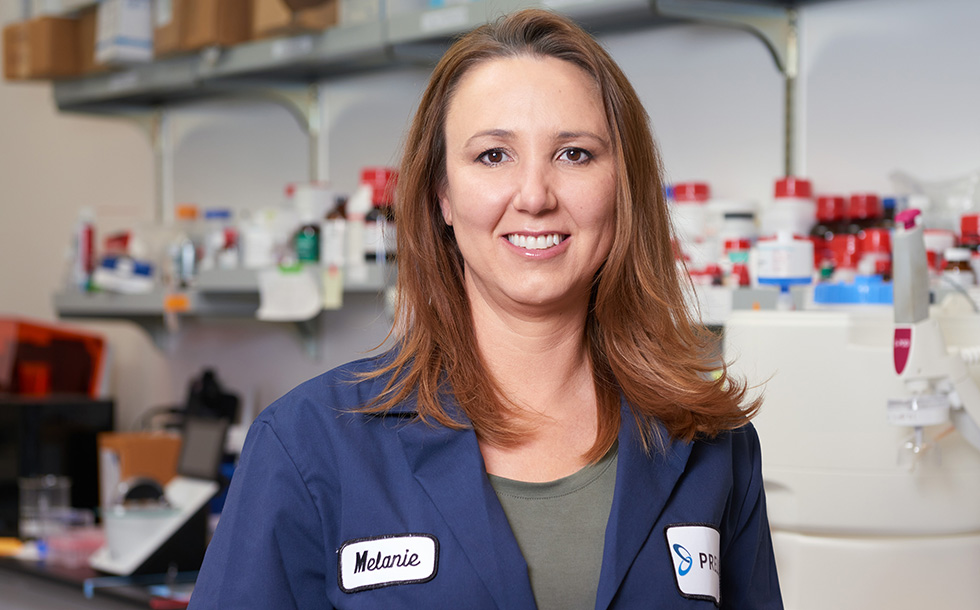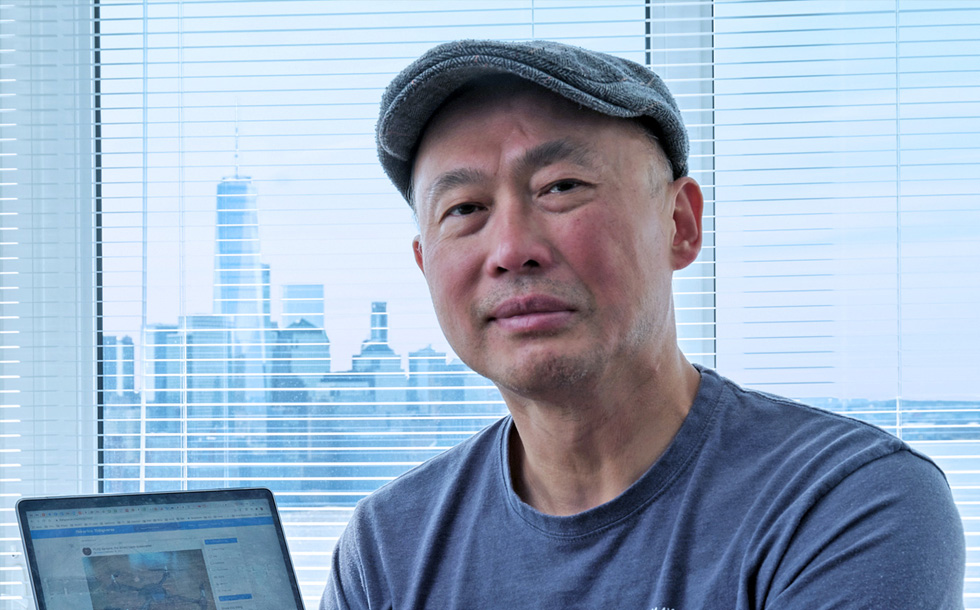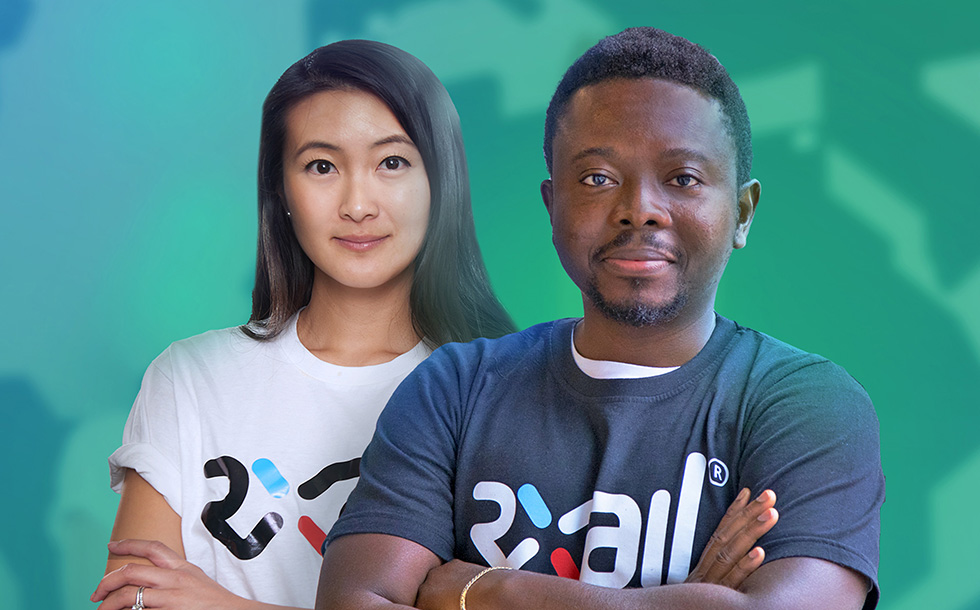“What is a deck?” The question consumed Melanie Matheu, PhD., in Physiology and Biophysics, as she sat in a Fairmont Hotel with 400 women in suits in 2014. The founder of Eventbrite was telling the women’s entrepreneurship group how she put together a pitch deck. Melanie wrote down “Deck?” in her notes.
Today Melanie is founder and chief executive officer of Prellis Biologics, a tissue engineering company. Essentially, Melanie invented a 3D laser printer that makes human tissue. Prellis’s flagship product is EXIS, a human immune system in a dish, which is accelerating pharmaceutical research. In December 2021 Prellis raised a $14.5 million Series B and has signed partnerships with pharmaceutical behemoths including Bristol Myers Squibb and Sanofi.
Melanie was born in Redwood City in the heart of Silicon Valley, in a family that found her passion for science disconcerting. Her parents and grandparents owned their own businesses in construction, welding, and engineering. The oldest of three siblings, Melanie became obsessed with nature and the sciences as a child. By junior year of high school, she was taking classes at her local university: Stanford.
“I went a very different path, into the sciences, and no one in my family understood what that meant,” Melanie says. When she committed to a PhD program, “They were like, why would you do that? There was a lot of confusion. They tried to talk me out of it.”
Melanie’s path into the sciences got a boost from a serendipitous meeting while working as a lifeguard at Ladera Oaks, a swimming and tennis club, her junior year in high school. A member who swam at the club daily happened to be a Silicon Valley angel investor focused on life sciences. It came up in conversation that, as a part-time Stanford student, Melanie had access to the university’s computers and library, including PubMed, the massive search engine for biomedical literature. The investor asked if Melanie be willing to do a research project. Melanie didn’t ask whether she’d get paid or what it would entail. She was game.
The project involved researching two companies doing trans-myocardial revascularization with a CO2 laser, a technique used to revascularize heart tissue after a heart attack. Melanie wrote up her report. The angel investor told Melanie, “You’re hired.” So began a lifelong mentorship.
While a student at the University of California, Santa Barbara, Melanie attended professional investment conferences, guided by her investor mentor. “I was way out of my league,” she says, mentioning a Goldman Sachs conference in Laguna Beach, “watching real pros in the Goldman Sachs portfolio pitching their companies.”
“The immune system is the crux of every disease. If we don’t understand these cells, we can’t tackle the disease.”
Melanie Matheu, PhD., CEO of Prellis Biologics
An impostor syndrome would follow Melanie. She felt more scientist than businessperson. But the Goldman Sachs conference left her with a takeaway. “There’s this bigger world out there,” she says, “where if you have an idea in the sciences, you can really make it happen.”
When Melanie talks science, she sounds like your favorite college professor breaking down difficult concepts. Her fluency across disciplines has to do with the number of fields she studied: Immunology, chemistry, biophysics, molecular biology, and protein engineering, among others. “I’m a total nerd,” she says.
After earning her undergraduate degree, Melanie “took eight months off” to work at a Stanford laboratory. On Wednesdays she took her lunch breaks at the university’s immunology meetings, which featured new speakers each week. One Harvard professor showed a grainy, five-second video of a cell climbing along a blood vessel. He credited the video to Michael Cahalan, a professor at the University of California, Irvine, whose lab had shown that immune cells move independently through tissue. “Oh my god,” Melanie remembers thinking. “We know nothing. I have to go to this lab.”
Melanie immediately emailed professor Cahalan to ask if she could rotate in his lab. Cahalan reminded her she needed to get into UC Irvine first. Then they could speak. Melanie applied and was accepted; she and Cahalan worked and published together for eight years, focusing on 2-photon imaging of immune responses. “The immune system is the crux of every disease,” says Melanie. “If we don’t understand these cells, we can’t tackle the disease.” Cancer, autoimmune disease, chronic inflammation, and cardiac disease all depend on a better understanding of immune cells.

Through her Ph.D. and two post-doctoral fellowships—one at the University of Ghent in Belgium and one at the University of California, San Francisco—Melanie continued to consult for the Silicon Valley investor she’d met in high school.
As a post-doc at UC San Francisco in 2015, conducting post-analysis for cell imaging of immune responses, Melanie was listening to a podcast when the host asked a cardiac surgeon when human hearts would be printable. Twenty years, said the surgeon. Why so long, the host asked. We haven’t solved the problem of microvasculature, said the surgeon. We can’t print tiny blood vessels.
At that moment Melanie was looking at a full-screen image of immune cells with tiny blood vessels obscuring everything. “I could see these with a two-photon pulsed light,” she says. “So why can’t we print them? If the light can illuminate them at this fine of resolution, we should be able to print them.”
Soon after this “aha” moment, Melanie was awarded a grant from the JDRF (Juvenile Diabetes Research Foundation), which meant she could start her own laboratory at a university. It was her ticket to a tenured professorship—a young Ph.D.’s dream come true.
Within 24 hours of the JDRF news, a startup contacted Melanie offering her a job as director of immunology. Despite the guarantee of stable income and prestige as a professor, she wanted to see what she could accomplish in the private sector. She turned down the JDRF grant.
Within months the startup failed. But, she says, she was wiser for it. She had witnessed how interpersonal dysfunction among business leaders and investors could affect clinical trials. “I learned so much, so quickly, about the kind of company I didn’t want to run,” says Melanie, stressing that the CEO was great. Others on the executive team, not so much.
The idea of tissue engineering hadn’t left Melanie’s mind. As the startup collapsed, Melanie approached one of her reports. “Don’t find another job,” she said. “Come work with me. I’ve got an idea, and I think I can make this work”

Melanie spent the next two-and-a-half months at home researching lasers and optical physics with her first employee. When she figured out her tissue engineering idea could work, she established Prellis Biologics Inc. and filed a patent on January 16, 2017.
The patent was “a ticking time bomb,” says Melanie, and Prellis needed to protect it—by creating a bioprinter and using it. Melanie found SOSV’s IndieBio accelerator online. Not only were they taking applications, but they offered lab space, which Prellis desperately needed.
Melanie pitched Arvind Gupta, founder of IndieBio, who today is an advisor to the program and a partner at Mayfield, a venture capital firm. According to Arvind, Prellis shared a YouTube animation of their concept: 3D printing human tissue with lasers to make organ transplantation a thing of the past.
Arvind was skeptical. Other companies had claimed to print tissue, but none did so at a high enough resolution for functional tissue. Melanie explained why her 2-photon approach—the same core technology she honed with professor Cahalan and originally invented by Professor Ian Parker—would be different.
Frankly, Arvind didn’t need to know if it would work. A $250,000 check would answer that question. Rather, says Arvind, “The job is to understand, if this works, could it change the world?” He believed it could. But Arvind, like all investors, had to think about how Prellis would sustain itself. “Everything we did had tech at its core, but a business at its heart,” he says.
Melanie blitzed the IndieBio team with the optical physics to prove her concept. “I was so thoroughly convinced about how huge this could be that it translated into our conversation,” she says. Arvind wrote down the terms on a napkin.
“I learned so much, so quickly, about the kind of company I didn’t want to run.”
Melanie Matheu, PhD., CEO of Prellis Biologics
At IndieBio, Prellis set up a laser in the basement, protected with laser-blocking curtains and a sign that said, “DO NOT COME IN.” Visitors had to wear protective eyewear.
Melanie’s team had two-and-half months to print usable human tissue. For IndieBio Demo Day, diagrams aren’t good enough. “You must demonstrate what you built, not just talk about it,” says Arvind.
And they did. Prellis printed lymph node organoids and challenged them with Zika virus, the pandemic that was a concern in 2017. The lymph nodes produced antibodies.
The tricky part about having a bioprinter is that you can make almost anything with it. Any tissue was fair game, so what would Prellis go after first? How would they generate revenue and find the product-market fit necessary?
The uncertainty became palpable in news coverage glowing about a company that could print organs proven to vascularize in an animal—but wasn’t doing it commercially. Prellis struggled to dial in a revenue model, entering the so-called “valley of death,” an apropos name considering Melanie’s hobby of ultrarunning. She’s been a crew member and pacer nine times in the Badwater Ultramarathon, a 135-mile foot race that literally takes place in Death Valley—in mid-July.
Ultrarunning, says Melanie, is not unlike founding a company. “You’re alone a lot,” she says. “You’re in your head. You’re not sure if you’re doing the right thing. And you have to sit with that. You are on that trail by yourself in the middle of a long haul. Maybe someone paces you for a while, but they’re not with you forever.” One decision, like a change in pace, can radically affect the next 50 or 100 miles. The mental discipline to not run too eagerly or too slowly can make all the difference.

Melanie says she mostly does 50k or 50-mile runs. In her last ultramarathon, the North Face Endurance Run, she “tore something” in her hip at mile three—and continued another 24 miles before stopping.
Three years after IndieBio, COVID-19 grabbed Melanie’s focus and brought Prellis out of the valley of death. Melanie joined her team in the lab to show how to print the lymph node organoids she’d demo-ed at IndieBio. She also obtained Prellis’s first vial of COVID-19.
Prellis built upon lymph node printing to create EXIS, an in vitro human immune system. It can produce human antibodies specific to a viral target like COVID-19 or an endogenous target (e.g., a human protein). It’s a big deal because it enables researchers to focus on a cancer or tumor target that expresses natively in a person. Normally, scientists can’t get antibodies for that. EXIS is also faster, cheaper, and more humane than animal testing because it eliminates the need for guinea pigs (or other animals).
Three years after IndieBio, COVID-19 grabbed Melanie’s focus and brought Prellis out of the valley of death.
The pharmaceutical world is excited about EXIS because many drugs fail in Phase 1 clinical trials, because they’re not first tested with human beings. With EXIS, pharma researchers can detect an off-target immune responses during the drug development process, saving time and immense costs.
Melanie “is a force,” says Arvind. In ten years, Melanie believes Prellis will be known for supplying the world with therapeutic candidates and will have moved into new areas of human tissue engineering.
“Melanie was and is an inspiration to me,” says Arvind, “as someone who can dream something very large out of an insight from her own experience and have the drive and courage to execute it.”
According to Melanie, her family is also proud of her work. Yet, she says, there’s an undercurrent of, “She made it back to business. Thank God.”
By Richard Ellis
Photos by Mark Madeo

